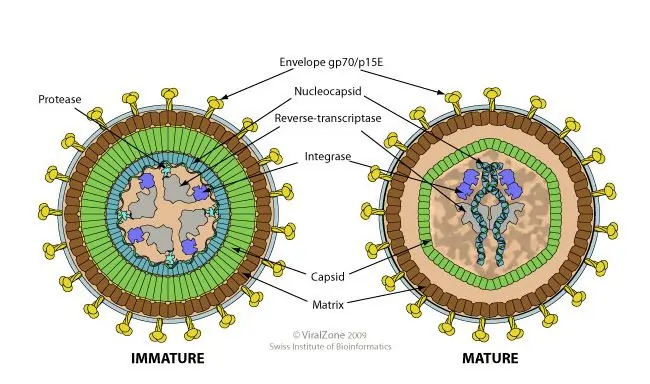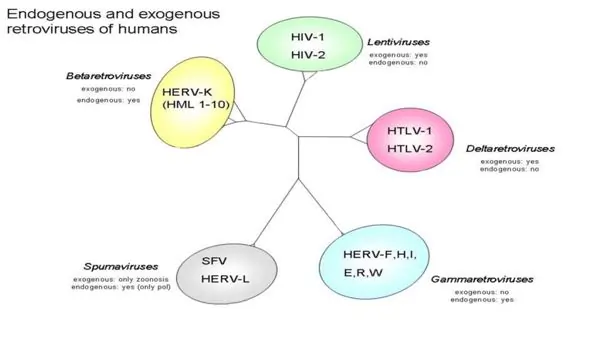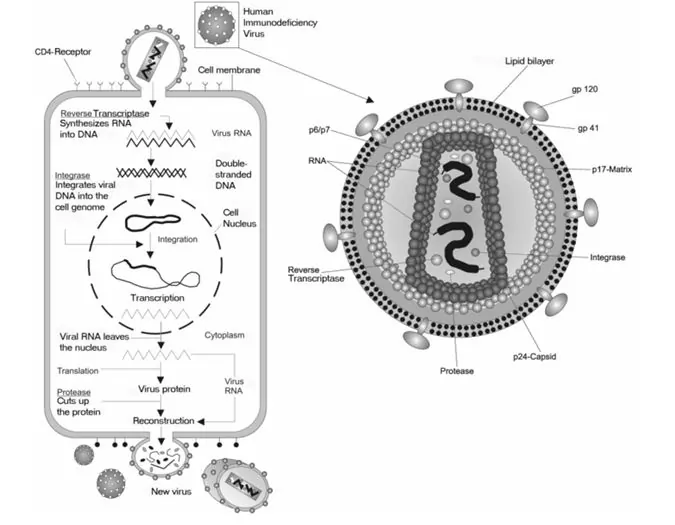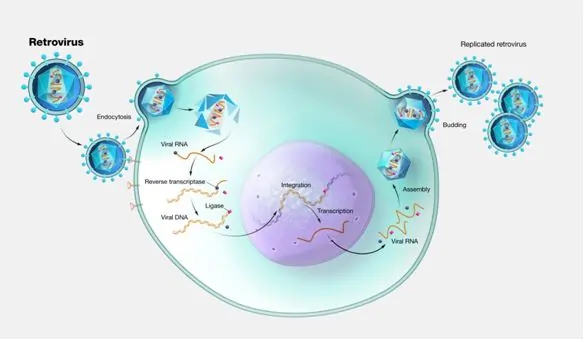
Role of Retrovirus in the Evolution of Human Genomes:
It is unlikely that retroviruses played a major role in the evolution of human genomes due to the ability of vertebrates to control, transport, and remove these threats.
Retroviruses have contributed in shaping the human genome through integrating genetic material from the host. The common example is the HIV virus, which, among other things, are capable of pumping their RNA into the host’s DNA through a mechanism called reverse transcription. This integration has brought immensely massive evolutionary consequences resulting in genetic differentiation and the development of new form traits in man.
- Understanding Retroviruses: Retroviruses contain their genetic material in the form of RNA. After entering the Host cell reverse transcriptase enzyme is required to convert rna into DNA. There after this DNA remains in the Host for rest of its life. This technique allows the virus to replicate at any moment the host cell reproduces itself.
- Endogenous Retroviruses (ERVs): Endogenous retroviruses (ERVs) are the viruses that have got integrated in to the host germline tissues (spermatogenic cells or ovary cells). Viral DNA is passed on to next generation. Approx. 8% of EVR is in the Human genome. These viral sequences are remnants that are part of prolonged infections that occurred millions of years back.
Impact on Human Evolution: The integration of retroviruses into the human genome has had various evolutionary consequences:
- Genetic Innovation: ERVs have played a role of gene importation and therefore a source of new genes that can be appropriated to perform new roles. For instance, several ERV sequences appeared to be adopted to regulate gene expression that defines the development and function of particular organs.
- Immune System Development: There is evidence which shows that retroviruses have contributed to tool making and construction of human immune system. Some of the ERV sequences are also related to regulation of immunological activity, this in turn increases the ability of the body to identify and counteract pathogens.
- Placental formation: The placenta formation is one of the most evident examples of retroviral influence in organism. For the development of Embryo and Placenta formation there must have presence of some EVR. This has been very crucial in ensuring the success of mammalian reproduction.
- Genetic variety: The integration of retroviral DNA might enhance the genetic diversity because new components are introduced into the genome. This variety may provide sub-stratum for natural selection to work upon, which implies the emergence of new charaoters and adaptations.

Case Studies
- Syncytin Genes: Some Syncytin genes which originate from ERVs are involved in the formation of the placenta. These genes assist in the formation of cells to form the syncytiotrophoblast; the layer of the placenta that allows the flow of nourishment between the mother and the baby. These examples depict how viral genes can be reasserted to be used in fundamental alternate biological functions.
- HERV-K: Some of the active families of ERVs are the Human Endogenous Retrovirus K (HERV-K) which is one of the most actively recently. The studies carried out have demonstrated that HERV-K sequences are active in many tissues, including during organism formation. This activity demonstrates that HERV-K can be in some way involved in human physiology to the present day.

Conclusion
Even the abilities retroviruses have made in the creation of the human genome are a clear pointer towards the issues of the fluidity of DNA. In this process the retroviruses integrated into genetic system and thus served necessary roles in many species for genetic development, immune system, formation of placenta and several kinds of genetic variations. Studying these sequences is useful for toughing out the relationship of viruses and their hosts, and what this tethering has done to human evolution.
What is a retrovirus?
A retrovirus is a viral organism that has RNA as its genetic material unlike a typical virus, it reproduces through the use of reverse transcriptase enzyme to convert RNA to DNA. When a retrovirus penetrates a host cell, the reverse transcriptase enzyme is used to convert reverse transcribe the viral RNA into DNA. Later on, the DNA that was produced recently is assimilated into the molecules of the host cell, allowing the virus to replicate by the division of the host cell.

Retroviruses are known to cause so many diseases in people and animals. An example of a retrovirus is the HIV that is responsible for Acquired Immune Deficiency Syndrome (AIDS). Other types of retroviruses also have the ability to trigger cancers and other unpleasant diseases to arise.Aside from HIV, the virus responsible for causing AIDS, there are numerous additional noteworthy retroviruses:
- Human T-cell Lymphotropic Virus Type 1 (HTLV-1): It is causatively associated with adult T cell leukemia/lymphoma and a neurological disease referred to as HTLV-1 associated myelopathy/tropical spastic paraparesis (HAM/TSP).
- Human T-cell Lymphotropic Virus Type 2 (HTLV-2): While HTLV-I is more hazardous, HTLV-II relates to particular neurological disorders.
- Simian Immunodeficiency Virus (SIV): This virus infects the non-human primate and is kin to HIV.
- HIV for instance contain in it reverse transcriptase that involves the viruses’s genetic material into the DNA of the host and may cause a number of illnesses.
What is a virus?
A virus is an ultramicroscopic infectious agent that for the most part cannot reproduce independently; it needs the living cells of an organism. Virus has the key characteristics:
- Structure: Viruses are sub-microscopic infectious agents that have nucleic acid as their genetic material, the nucleic acid may be either DNA or RNA and it is enclosed within a protein shell known as capsid. Some viruses also have an outer lipid envelope that is acquired from the host cell’s membrane.
- Size: Bacterial infections or organism size Bacteria are much larger than viruses with sizes ranging from 20 to 300 nanometres in diameter.
- Replication: This is an important factor to deliberate on, since unlike other living organisms, viruses cannot reproduce by themselves. They must enter a host cell and then take control of the cell’s mechanisms to output the next generation of the virus.
- Host Range: Viruses can invade all the categories of life forms, be it animals, plants, fungi, bacteria or even archaea. Different viruses are usually likely to affect certain populationsof hosts.
- Transmission: Viral diseases can occur through contact, air-borne, through vectors, contaminated foods and water among others.
- Disease: Some of the known viruses have impacts on the health status of their hosts in various forms of diseases. For instance, the influenza virus leads to flu, the coronavirus, particularly SARS-CoV-2 causes COVID-19, and the HIV causes AIDS.
How Retroviruses are different form Virus?
Retroviruses have some unique characteristics that set them apart from other types of viruses
- Genetic Material: Retroviruses have their genome in RNA while the majority of viruses have DNA.
- Reverse Transcription: Retroviruses possess a unique gene product called reverse transcriptase that makes them so distinct. It transcribes the viral RNA into DNA immediately after the virus enters a host cell. This step is not there with other similar RNA viruses that go through a replication cycle.
- Integration into Host Genome: The viral RNA is then transcribed into DNA and the retrovirus brings this DNA into the host cell’s nucleus utilizing the integrase enzyme. This viral DNA is called a provirus and can integrate in to the host genome and can even remain there permanently enabling the virus to reproduce as soon as the host cell begins to dive.
- Replication Process: The life cycle of retroviruses entails using the host cell equipment in the generation of new viral particles. This process includes the conversion of the integrated viral DNA, in turn, to RNA for synthesizing viral proteins and new viral RNA genome.
